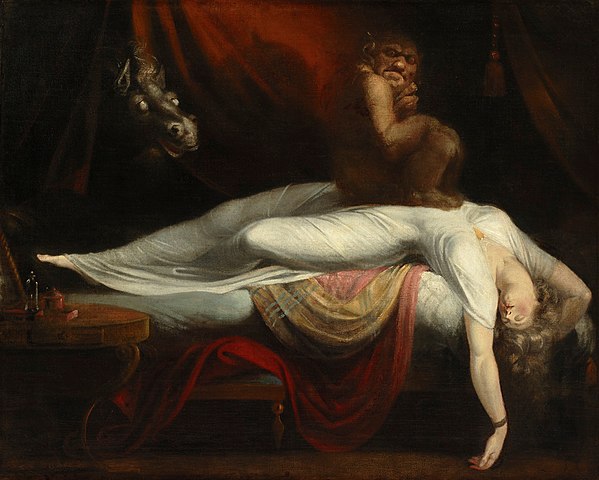
Romanticism was an artistic, literary, and intellectual movement that originated in Europe towards the end of the 18th century and peaked during the early to mid-19th century. It emerged as a reaction against the Enlightenment’s emphasis on reason, order, and classical restraint, advocating instead for individual expression, emotion, and the sublime beauty of nature. Romanticism celebrated the dramatic, the exotic, the wild, and the passionate, focusing on the power of imagination and the depths of the human psyche.
Characteristics of Romanticism Art:
- Emotion over Reason: Romantic artists prioritized emotion and feeling over rational thought, aiming to evoke strong responses from their viewers.
- Nature and the Sublime: Many Romantic works depict nature in its most powerful and awe-inspiring aspects, often portraying it as a reflection of human emotions or as a force that dwarfs humanity.
- Exoticism and the Past: There was a fascination with the exotic, the ancient, and the medieval, as artists sought to capture the essence of times and places perceived as purer or more emotionally charged than the contemporary world.
- Individualism: Romanticism celebrated the individual and the artist’s personal vision, often featuring heroes, rebels, or outcasts as subjects.
- Innovation in Technique and Style: Artists employed bold colors, dramatic contrasts, and expressive brushwork to convey their emotional and imaginative visions.
Key Artists and Contributions:
- Francisco Goya (1746–1828) – Often considered the father of Modern Art, Goya’s work ranges from the Rococo style to more profound, dark, and introspective Romantic paintings, such as “The Third of May 1808.”
- Caspar David Friedrich (1774–1840) – A German painter known for his allegorical landscapes, Friedrich’s works, such as “Wanderer above the Sea of Fog,” capture the sublime beauty and emotional depth of nature.
- J.M.W. Turner (1775–1851) – Turner was an English artist celebrated for his expressive colorizations, imaginative landscapes, and turbulent marine paintings, like “Rain, Steam, and Speed – The Great Western Railway.”
- Eugène Delacroix (1798–1863) – A leading French Romantic artist, Delacroix’s use of expressive brushstrokes and his study of the optical effects of color profoundly shaped the work of the Impressionists. His most famous work, “Liberty Leading the People,” epitomizes the spirit of Romanticism.
- John Constable (1776–1837) – Constable, an English landscape painter, is known for his richly detailed, realistic depictions of the English countryside, notably in works like “The Hay Wain.”
- William Blake (1757–1827) – Blake was an English poet, painter, and printmaker, whose visionary and mystical works, such as “The Ancient of Days,” were largely unrecognized during his lifetime but later acclaimed for their expressiveness and creativity.
- Théodore Géricault (1791–1824) – Géricault was a pivotal figure in French Romanticism, best known for “The Raft of the Medusa,” a painting that depicts human suffering with unflinching realism.
- Samuel Palmer (1805–1881) – Palmer, an English landscape painter, etcher, and printmaker, is known for his pastoral scenes that embody Romanticism’s fascination with the ideal and the visionary.
- Thomas Cole (1801–1848) – An American artist and the founder of the Hudson River School, Cole’s landscapes, such as “The Oxbow,” reflect Romantic themes of exploration and natural beauty.
- Dante Gabriel Rossetti (1828–1882) – Though primarily associated with the later Pre-Raphaelite movement, Rossetti’s work, including his paintings and poetry, carried Romanticism’s emphasis on emotion and medievalism into the Victorian era.
These artists, through their diverse approaches to art, captured the essence of Romanticism—its emphasis on emotion, the natural world, and the break from classical conventions—leaving a lasting legacy that continued to influence various art movements that followed.
Legacy: Romanticism had a profound impact on the development of Western art, influencing various movements such as Realism, Impressionism, and Symbolism. Its emphasis on emotion, the individual, and the sublime continued to resonate through the works of later artists, making it a cornerstone of modern artistic expression.